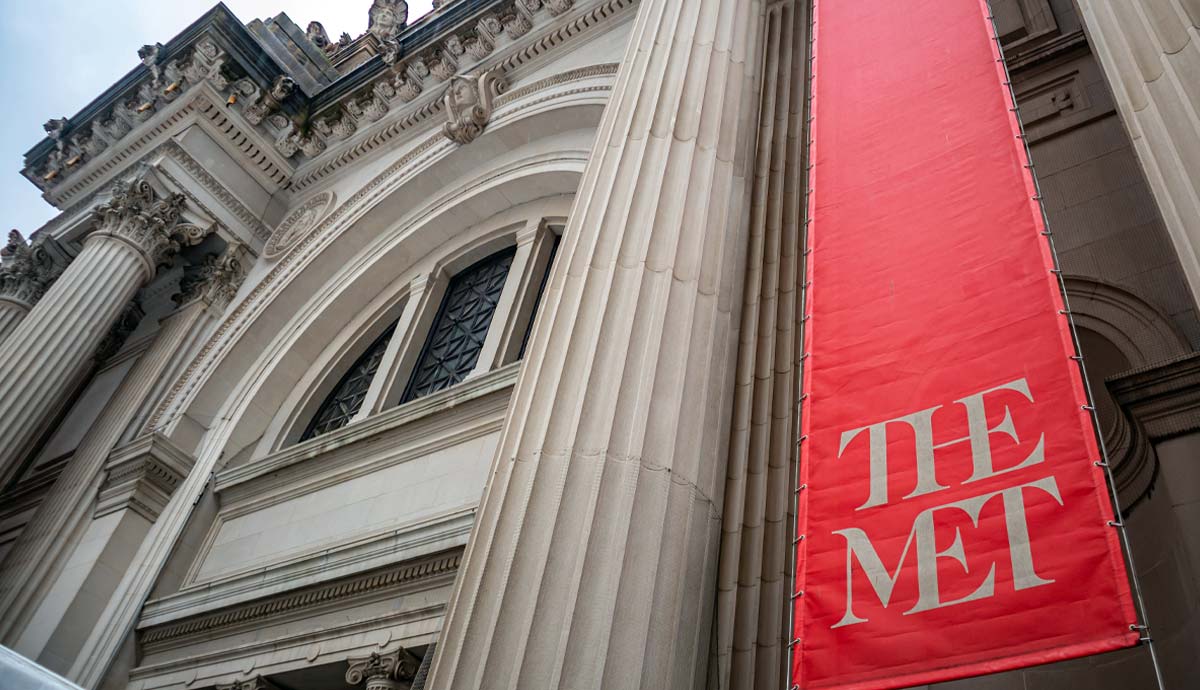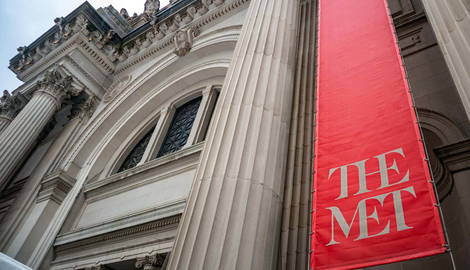
The Metropolitan Museum of Art’s history begins in the 19th century on the Fourth of July, yet, ironically, not in the United States. It starts at a restaurant in Paris in 1866, where a group of wealthy Americans sat down to eat a meal in celebration of their independence from Great Britain. The results of the conversation were carried back to America, where the Union League Club of New York would make it their mission to bring art to the United States in a way that would rival European institutions.
Metropolitan Museum of Art: The Beginnings

In 1866, a group of wealthy American men were in Paris. Despite not being in the United States, they had met for supper at a restaurant to celebrate the Fourth of July. Discussions began, centering around the idea of an institution of fine arts in the United States that could rival those of Europe and bring public art education to the states. One of the men in attendance at this celebratory supper was a lawyer named John Jay, who also happened to be the President of the Union League Club of New York, a secretive society of wealthy individuals who promise to uphold the Union and served as philanthropists.
Upon returning to New York from France, Jay moved quickly. The organization looked to others in the community to help, such as local government and organization leaders, business owners, professional art collectors, artists, and other philanthropic individuals or groups. In 1869, the group believed that giving one person too much power over the institution and the decisions going into its creation could be disastrous. Instead, they put together a committee, placing John Johnson in charge as President.
The vase you see above is engraved: “Thirty six members of the Union League Club unite in presenting this vase to Thomas Nast as a token of their admiration of his genius and his ardent devotion of that genius to the preservation of his country from the schemes of rebellion. April, 1869.” It was created by Tiffany & Co. and is made of silver with gilt and decorative handles in the shape and appearance of cherubs attacking dragons. It entered the MET’s collection in 1907, long after its founding, yet is one of the few objects in their collection that looks back to the organization responsible for its founding.
The First Accessions

On April 13th, 1870, the city of New York officially incorporated the museum into the city, It initially opened at the Union League Club’s building, the Dodworth Building. They did not yet have a building for their museum, nor had they acquired anything for their collection. They needed to find artwork to accession.
On November 20th, 1870, the museum acquired its first accession. A Roman sarcophagus was the perfect object for them to take into their collection, as they sought to establish an institution that could rival the museums in Europe and would certainly need objects of antiquity in order to gain the same status of respect under 19th-century values surrounding refinement, now often criticized as euro-centric. The sarcophagus is decorated with carved relief sculptures, such as draped garlands of oak leaves that are held up by tiny winged gods of classical history called erotes, with the head of Medusa appearing twice in the empty spaces above the garland as it dips low from the weight of itself. The center has a blank framed area to inscribe a name onto the stone. On the side of the lid, erotes are hunting. Meanwhile, two larger erotes lean against the corners of the lid.

In 1871, the museum acquired 174 paintings by prominent European artists such as Anthony van Dyck, Giovanni Battista Tiepolo, and others. While this number of paintings being bought at once is uncommon today, it would have been even more uncommon in the 19th century, making this purchase an interesting beginning of the museum’s collection. This Anthony van Dyck painting, Saint Rosalie Interceding for the Plague-Stricken of Palermo, shows Saint Rosalie, a Catholic saint, peering up to Heaven in prayer. She seems to be floating in the sky, held up and surrounded by flying erotes. One is seconds away from placing a crown of flowers on her head. The city of Palermo had been hit hard by the plague, and the citizens turned to Saint Rosalie for help, due to her bones being discovered that year in a cave outside the city after appearing to a man and directing him to her place of burial.
Acquiring these paintings marked a major milestone for the Metropolitan Museum of Art. However, rapid expansion soon strained the confines of its building. They needed to find a new building to house their new art collection. In 1873, the collection was moved to a new building called the Douglas Mansion, which was leased for $8,000 annually for five years, with an additional year added to the lease after renewal. This would be the collection’s second home for six years. When construction finished on the new building at 1000 Fifth Avenue at Central Park, the museum moved its collection again.
The Cesnola Collection of Cypriot Art

With a much larger building, there was room to expand the collection. In 1872, thirty-eight John Kensett paintings came into the collection at the MET’s new location. From 1874-76, the collection took in an especially impressive amount of objects of classical antiquity after purchasing the Cesnola Collection of Cypriot Art, including this bronze tripod. Cyprus was situated east of Greece and West of Anatolia, taking in styles from both. This tripod is a unique blend of Mediterranean and Near-Eastern styles. It was created with multiple pieces of bronze that were connected via a form of soldering. Tripods were extremely common in the ancient Mediterranean, ranging from Cyprus to southern Italy, and therefore would have been considered a perfect item to add to the MET’s collection in order to bolster its reputation as a museum of fine arts.
Classical antiquity was considered the pinnacle of art throughout centuries of Western art history, and the MET aimed to compete with European museums that had upheld these standards since the rise of Humanism in the Renaissance. In 1889, two Edouard Manet paintings came into the collection, while in 1902, the local paper wrote about the MET’s new acquisition of a neoclassical painting. In the following years, artists like Auguste Renoir, Henry Matisse, and more would have their artworks join the collection.
Reflecting on the Past for a Better Future

People were beginning to notice the collection, and the MET had finally met its goal of being viewed as a refined museum of European value and style. With the museum’s early beginnings wrapped in such outdated values, much of the modern criticism surrounding the MET is centered around discussions of white supremacy, as it largely ignored the cultures of non-European civilizations while putting European art on a pedestal. The museum posted an anti-racism statement to their website in 2020, claiming it recognizes the importance of reflecting on a racist past to create change for a better future. As part of the statement, the MET’s management promised to uphold thirteen commitments within the institution to develop positive change concerning anti-racism.
Expanding the Collection at Fifth Avenue

The museum’s reputation flourished internationally after the acquisition of classical objects, and soon the collection expanded to non-Western cultures. John Johnson, the committee’s president who was in charge of accessioning objects into the collection in the late 19th century, had a strong interest in ancient Egyptian art. As a result, a large number of the artworks entering the collection were ancient Egyptian in origin. The MET is now known to have the most extensive collection of Egyptian art outside of Cairo, Egypt. Almost all of the Egyptian artworks are on display at the MET today, including this little blue hippopotamus, which the museum has adopted as its unofficial mascot and nicknamed William.
The museum’s architecture underwent structural changes in the period from the 1970s until the 1990s under the architect Kevin Roche John Dinkeloo, who added multiple wings to the building. The Robert Lehman Wing was built in 1975 and it features paintings by Old Masters and Impressionists on display. The Temple of Dendur, awarded to the MET by President Lyndon B. Johnson (after it was gifted to him by the Egyptian government in 1967), was held in the Sackler Wing, built in 1978. Wings continued to be built throughout the 1980s and into the 1990s until the extensive project’s completion. The most recent renovations occurred in 2011 and 2012 when the museum opened new galleries called Art of the Arab Lands, Turkey, Iran, Central Asia, and South Asia and New American Wing Galleries for Paintings, Sculpture, and Decorative Arts.
The Cloisters of the Metropolitan Museum of Art

In 1938, the MET opened a second location called The Cloisters, also in Manhattan. Its collection remains strictly medieval, making the museum unique in the United States. The structure is modern but utilizes real medieval cloisters from European monasteries that were sent to the United States when acquired by the MET. The MET’s website claims that the building is not meant to be a replica of any actual medieval building, but it is simply designed to make you feel as if you are in a medieval setting while visiting the museum.
The Cuxa Cloisters were purchased by Geroege Grey Barnard, an American sculptor who was the original owner of the Cloisters. He had traveled across Europe and found medieval artifacts by contacting rural farmers who might have found potential artifacts on their land. Upon returning to the United States shortly before World War I, he started The Cloisters as a museum to show his findings. In 1924, he put the museum up for sale and John D. Rockefeller, Jr. donated the funds for the purchase to the MET.









